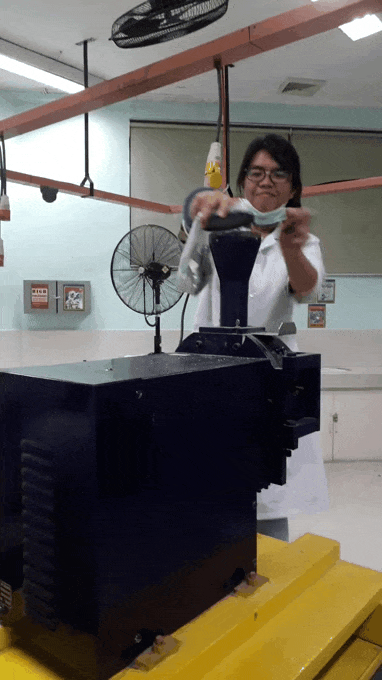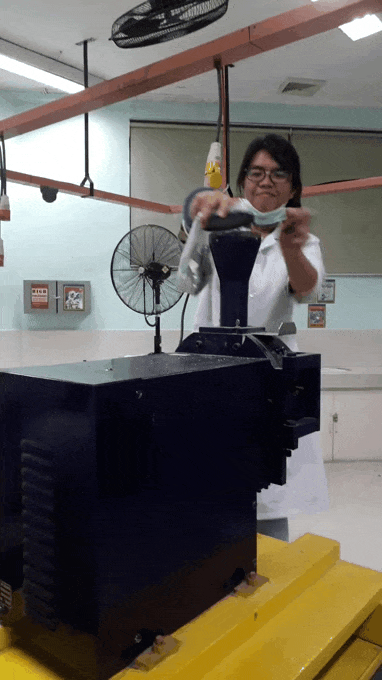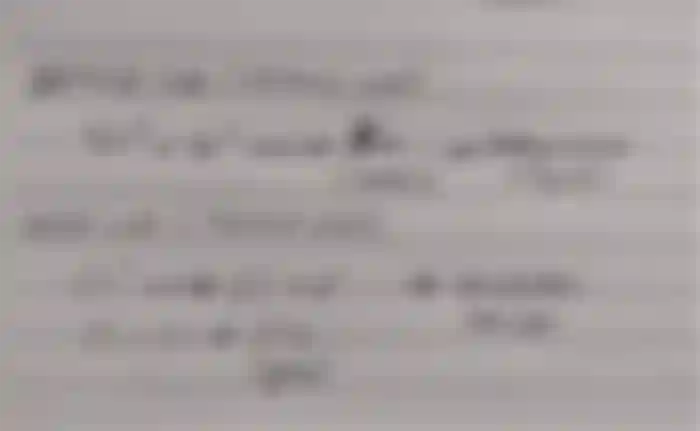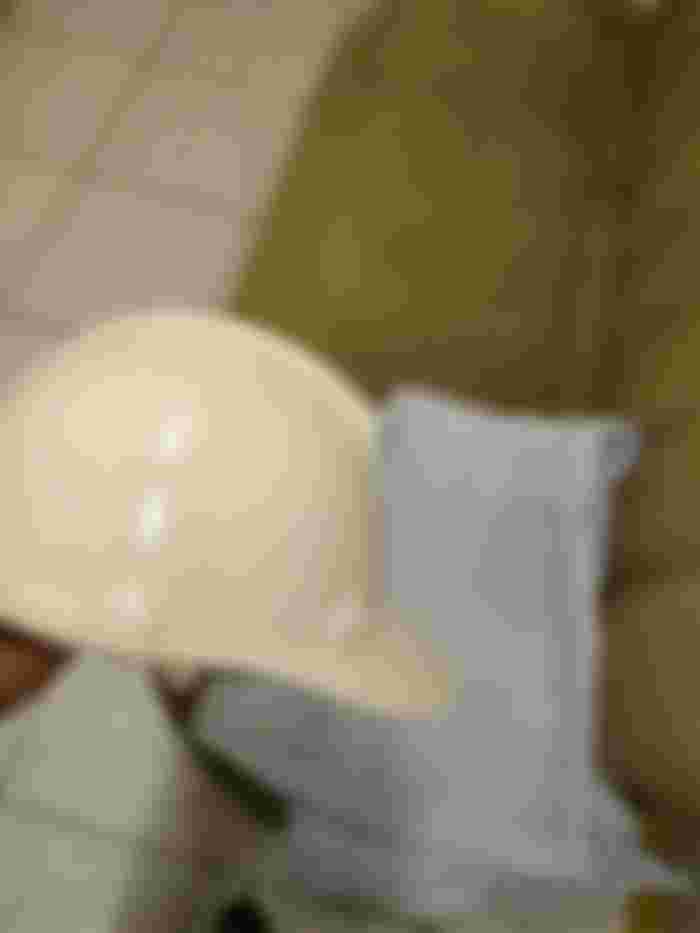Back to a mineral lab and geochemistry
Hey Hey~~ I am back to the lab again! And back to trying to be active ^w^ So just a little update, I am officially back in a testing lab! And I am happily working with ores and lab grandpas and grandmas. I actually have no issues here anymore because I thinkI'm guided really well on procedures and lab protocals. And since they're old people, they speak so calmly and I like that. I don't feel the rush or pressure despite the fact that we handle much more samples than my previous workplaces.
It appears that geochemistry really is the field that I belong to. There's also a geochemistry graduate here (her master's study and she told me that the company sponsors master's degrees so I should just inform the HR adter regularization so they can enroll me if I ever want. Meaning free fieldwork and lab access for the master's thesis UwU
It's a really good place on top of the fact that it's just 30 minutes away from my place. I have no regrets in coming here and I've already been here for almost 2 weeks, and I'm sure I'll be here longer.
Going back to ore talk, the last time I wrote about ores, I wrote about classifications. So this time, it’s finally time to discuss metal extraction! It’s honestly not as exciting as it looks, because if we’re basing on my experience, you either come out extremely dusty or extremely sweaty. It depends on which end of the process you get assigned to, or if you have to oversee the entire process, you’ll get to experience being dusty and sweaty on the same day XD
First and foremost when you get an ore sample, you have to crush/grind it. It has to be in uniform size as much as possible. In most mining companies, they have an analytical mill, a few splitting riffles, pulverizers and a mechanical sieve ready for this. I’m not exactly sure what sieve size they use, but the one we use in a testing lab is at a 80-40 micron mesh. That’s really fine and it can get dusty whenever you sieve.

younger me using an analytical mill for the first time. That thing scared me, I swear ;;-;; such a violent machine that just keeps eating rocks. See the internal panic in my eyes XD
Next thing is to concentrate it. it’s either you use a hydraulic hose to wash dirt away (this is mostly applicable for high grade and inert ores, the types where you see chunks of metals as soon as you dust off a bit of dust), you use a magnet, froth floatation, or you treat it with chemicals (applicable for refractory ores). Whatever works to get rid of rocks, organic matter or any other interference (we call this gangue) from the metals, actually.
Then the next step? well, that would depend on the reactivity series again. The reactivity series is what I call the holy scriptures of chemistry and I swear, if you do my kind of work, it would be great to know it by heart.
Metals with high reactivity, the ones in the p block of the periodic table, are often the easiest to treat and extract from since they easily lose an electron. In these cases, they often undergo Electrolytic reduction. Here, you’ll have to use a bit of electricity and electrochemistry knowledge. It looks like a lot to study, it is. but the end result is very pure metals and that's often a very sought out commodity. Gases could also be a very nice commodity that can be acquired here, but our focus is metals right now.

sorry for my handwriting again, I'm a bit lazy to type this on MS word, I swear. Anyways, this is the gist of what happens in electrochemistry. You have your metal on the cathode side then gases or halides on the anode side. This method is also used for gold plating and for any metal coating practice, actually but I'll save that for a different discussion.
Metals with medium reactivity, calcination and roasting works. Both processes produce an oxide end product, yet the process differs just slightly. For Calcination the process involves heating concentrated ores in a place with limited air. Usually they use a muffled, reverberatory or multiple hearth furnace for this since you can control the air flow rate. The point of limiting the air is to dehydrate the ores. To remove moisture and organic matter without actually melting the metals in the ore. This is a good method when you have hydrous ores or if you have carbonates

my example of common metals that gets reduced through calcination
Roasting is the opposite of calcination. When it comes to roasting, you have an unlimited supply of oxygen/free air. It’s also a way to remove organic matter from the ores. This is actually the most common extraction routes for your sulphides

my example of metals that are normally roasted to become oxides
Smelting is also a way to process metals with medium reactivity and the end product is an oxide too. This process is pretty different though in a sense that it uses reducing agents. Normally carbon or carbon monoxide would suffice and this usually occurs in chain reactions. For the process, oxide ores are heated with a carbon source. This could be petroleum coke or charcoal and the reaction would be as follows:

Metals with low reactivity, in other words, the noble metals like gold, silver, platinum and palladium. The only way to extract these metals would be to reduce them with precipitating agents. In most cases, it’s sodium cyanide. Really nasty stuff, I tell you. Luckily, the highly toxic form of cyanide hasn’t been used since the early 1900s (hopefully). In recent journals and newsletters I’m subscribed to though, I see that they’ve been using thiosulfate, thiourea, halide and thiocyanite as cyanide substitutes. In some cases, they’ve been using biogenic cyanide (like pyocyanite) as a leaching agent since it doesn’t take that much cyanide to actually leach out noble metals. Around 100 to 500 ppm suffices to extract from a 1kg bulk sample. Hopefully these newsletters eventually gain applications because it would be nice to see the mining sector take more environmental responsibility (aside from their rehabilitation budget during and after mining operations).
this is all I can elaborate for today XD
On a side note~ I love my new work uniforms and my room in the lab! (yes, I get my own room there too ^w^ It's in case of another pandemic and we need to quarantine or go into another lockdown again

Sources:
https://www.sciencedirect.com/science/article/abs/pii/S0892687521005653
https://chem.libretexts.org/Bookshelves/Inorganic_Chemistry/Supplemental_Modules_and_Websites_(Inorganic_Chemistry)/Descriptive_Chemistry/Elements_Organized_by_Block/3_d-Block_Elements/1b_Properties_of_Transition_Metals/Metallurgy/An_Introduction_to_the_Chemistry_of_Metal_Extraction
https://education.nationalgeographic.org/resource/ore






Hahaha your handwriting is fine and I love your nerdy look...super cute, Cell. I'm glad you enjoy doing what you are doing.